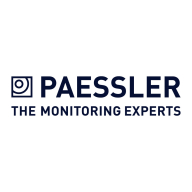

Find out what your peers are saying about NinjaOne, Kaseya, N-able and others in Remote Monitoring and Management (RMM).
| Product | Market Share (%) |
|---|---|
| Datto Remote Monitoring and Management | 11.7% |
| Kaseya VSA | 18.2% |
| NinjaOne | 13.5% |
| Other | 56.6% |
| Product | Market Share (%) |
|---|---|
| PRTG Network Monitor | 4.1% |
| Zabbix | 11.4% |
| SolarWinds NPM | 4.4% |
| Other | 80.1% |


| Company Size | Count |
|---|---|
| Small Business | 5 |
| Midsize Enterprise | 1 |
| Large Enterprise | 2 |
| Company Size | Count |
|---|---|
| Small Business | 57 |
| Midsize Enterprise | 18 |
| Large Enterprise | 43 |
Autotask Endpoint Management is everything you need from an RMM solution, and it is all managed On Autotask’s customizable dashboards.
PRTG Network Monitor runs on a Windows machine within your network, collecting various statistics from the machines, software, and devices which you designate. PRTG comes with an easy-to-use web interface with point-and-click configuration. You can easily share data from it with non-technical colleagues and customers, including via live graphs and custom reports. This will let you plan for network expansion, see what applications are using most of your connection, and make sure that no one is hogging the entire network just to torrent videos.
To monitor a large IT environment, it's important to be able to scale PRTG up. Paessler PRTG Enterprise Monitor includes all the proven capabilities of PRTG Network Monitor, which are enhanced by exclusive ITOps Board for a service-oriented, central overview of multiple PRTG servers.
We monitor all Remote Monitoring and Management (RMM) reviews to prevent fraudulent reviews and keep review quality high. We do not post reviews by company employees or direct competitors. We validate each review for authenticity via cross-reference with LinkedIn, and personal follow-up with the reviewer when necessary.